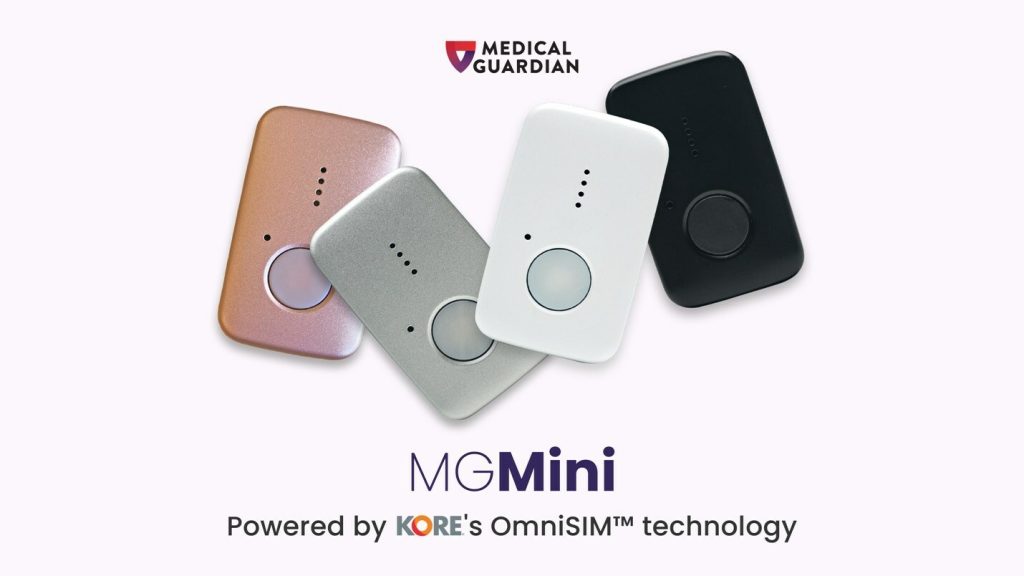
The MGMini is a wearable device that when pushed can alert medical personnel and loved ones, offer reassurance, and send assistance at a moment’s notice by connecting to a live call center. The MGMini comes in an oblong metal shape. Included are two lanyards, a charger allowing 96-hours of battery life, and a clip for one’s belt if one opts to wear the device that way.
Goals of the MGMini as Assistive Technology
The MGMini aims to promote sociability by removing societal barriers to accommodate disability. For example, this assistive technology is great for someone who is prone to falling. Such a disability can make going outside by oneself or being left alone for long periods of time a scary experience. This device aims to enhance independence by making help much more accessible, allowing individuals to leave their home without fear of dying or getting in an accident with no one to help them.
How do two of the features of MGMini look through the social model of accessibility?
The Call Button
Positives
- By triggering a call from wherever the wearer is to a 24-hour monitoring center, the device’s button rapidly connects the wearer with the appropriate aid they need. It can dispatch emergency services to the wearer’s location, whether at home or at a Broadway show, while simultaneously alerting their family and caregivers, or to talk the wearer through a non-emergency situation to keep them calm, while asking for one of the wearer’s caregivers to check in on them.
- Simply pressing the button being the only action needed is extremely efficient. The button is slickly designed to be almost seamless with the rest of the device, yet is easy to find by a person with vision impairment or low vision. On being pressed, he MGMini vocally states “Initiating Help. Press and hold the help button to cancel”. The button then beeps ten times (one beep per second) to alert you that you can still cancel the call if needed. After ten seconds the MGMini says, “Call in progress”. “Call connected” is announced immediately after. Viewing the MGMini using the social model of accessibility, these vocal features allow for the user to enhance their independence by not requiring a person to be around them at all times.
Negatives
- The MGMini has no screens to visualize the language being communicated. This makes it inaccessible by a person who is deaf or hard of hearing, who has limited or no range of motion in their hands or arms, or who is non-verbal.

Photo courtesy of Medical Guardian
The Visual and Practical Design
Positives
- The sleek design, much more elegant than other devices on the market, allows the user to feel as if they are not wearing a medical device. The design also offers flexibility, as it can be worn in different ways, either as a necklace or on the hip. This is especially useful for people who need to be on oxygen 24/7, and who can find it frustrating to have multiple objects (whether tubes or strings) hanging on their neck.
- The MGMini gives the user a chance to consider fashion, not just efficiency, by offering four different color options for their device–silver, gold, black, and rose gold.
- The device is also waterproof which allows the user not just to wear it in the shower, but to go out in all sorts of weather without worrying about it short-circuiting.
- By making this mobile device the lightest and smallest on the market, the designers enable individuals to not feel encumbered physically or psychologically with a medical device, unlike most such devices, which are usually bulky, clunky, or plasticky.
Negative
- While flaunting its “fashionability”, and definitely an upgrade from the original 1980s model, the MGMini still only caters to one sort of fashion, and still reads as a medical device.
How might MGMini be improved to enhance greater technological accessibility?
- add a connection to hearing-aids and/or bluetooth devices
- add a screen for people who are deaf or hard of hearing to be able to communicate with the operators on the other end.
- add a voice-recognition software for those with mobility disabilities.
- add additional design options
Works Cited
Forbes Health. “The Best Alternatives To Life Alert.” Accessed September 12, 2024. https://www.forbes.com/health/l/best-life-alert-alternatives/.
“MGMini – MG Support.” Accessed September 12, 2024. https://www.medicalguardian.com/support/mg-mini/.
Wireless, KORE. “KORE and Medical Guardian Collaborate to Launch First eSIM-Powered Medical Alert Device.” Accessed September 12, 2024. https://www.prnewswire.com/news-releases/kore-and-medical-guardian-collaborate-to-launch-first-esim-powered-medical-alert-device-302073604.html.